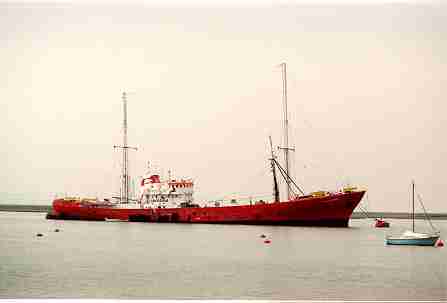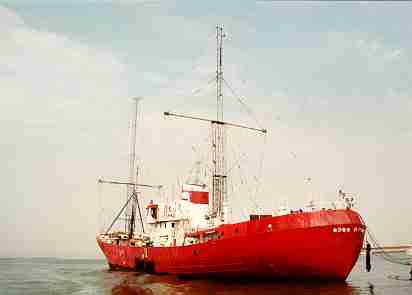
|
|
|
Jump ship to :
This is a reproduction of my articles on Offshore Radio from the January 2002 edition of Radio Active, and on Pirate BBC Essex from the October 2007 edition of Radio User, with the kind permission of the Editor of Radio Active/Radio User and PW Publishing Ltd.
The Golden Offshore Era: 1990 - 2007 Tom, Jimmy & Liam Read’s Radio Trips to Essex By Tom Read M1EYP, G-20843, BDXC-1040
I’ve lost count of the number of articles and books I have read, and records and videos played, that cover the offshore era of 1964-1967, Radio Caroline, Wonderful Radio London, Radio 390 et al. There’s been plenty also tracking Radio Northsea International in the 70s and Laser 558 in the 80s. And three cheers for that. This incredible volume of material reflects only our insatiable demand for such, and perhaps a little negatively on the brand of commercial radio as currently delivered from boardrooms around the UK. I was born in 1970, nearly three years after most of the original offshore pirates had been closed down, and yet I have always found the topic to be fascinating, and the style of broadcasting most absorbing.
The original commercial pirate for England, Radio Caroline, defied the Marine Etc Broadcasting (Offences) Bill of 1967 by continuing broadcasting beyond 14th August of that year. It managed to maintain an intermittent presence through the 70s and 80s. It was the 1990s that saw British commercial radio revolutionised again, Radio Caroline given its sternest challenges, and a surprising and refreshing new brand of offshore radio by the end of the decade.
Caroline’s live programmes on 558 kHz MW from the Ross Revenge, anchored in international waters in the North Sea, were heard regularly in my home town of Macclesfield around Easter time, 1990. By June, the new wave of "incremental" radio stations were appearing, and in what was surely a confrontational move by the then Independent Broadcasting Authority (IBA), Spectrum Radio was allocated the frequency of 558 kHz – Caroline’s frequency! During Spectrum’s pre-launch test transmissions, Caroline broadcast its complaints of "deliberate interference by the DTI" as both stations battled it out on 558 kHz. Spectrum threatened the IBA with legal action, and was hastily assigned 990 kHz as a parallel frequency. On the date of Spectrum Radio’s official launch of a full programme service, 25th June 1990, Caroline vacated 558 kHz. Caroline made short returns on 558 with brief tests on the 8th July and on air between 1500 and 1630 hours on Sunday 19th August. More substantial was the full programming from the 10th to the 16th of September. This gave a crunching signal into Jersey, where I was working as a professional musician that summer season. But sadly, that was the last I heard of Caroline as an offshore pirate. There followed broadcasting on 819 kHz from 4th October to 5th November, but inaudible to me being based in Newcastle upon Tyne at this stage. Following storms, power failures and rescues, the Ross Revenge was unmanned in the North Sea between the 10th and 14th December. Then the 1990 Broadcasting Bill became law, extending considerably the powers of the authorities and seeming the final nail in the coffin for a beleaguered Caroline. However, the Caroline management led by Peter Moore, and its supporters ensured that with determination and no little innovation, Caroline maintained its media profile throughout the next decade. 

(photographs during the Queenborough August 1997 RSL broadcast - Alan Beech) Varied and diverse methods of broadcasting were used, including Restricted Service Licences (RSL) from the Radio Authority, on both FM and MW, satellite delivery, relays via short wave transmitters in Ireland, USA and England, and Internet webcasting. A summary follows; this includes all events of which I am aware, but may not be exhaustive:
(Nightime on the River Blackwater) |